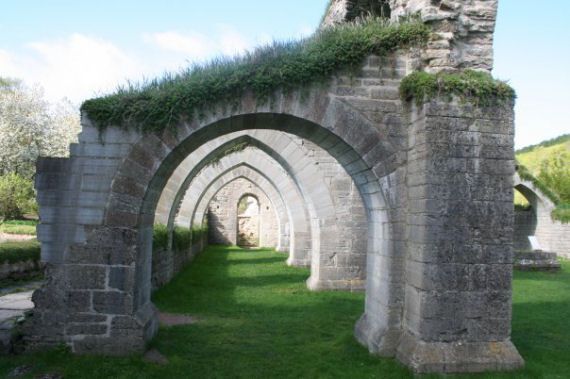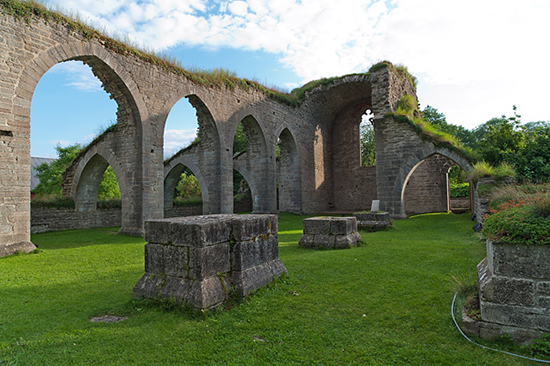Alvastra Abbey was a Cistercian monastery located at Alvastra in Östergötland, Sweden. It was founded in the first half of the 12th century by a donation of land from King Sverker I of Sweden to the Cistercian Order. It was dissolved and appropriated by the Crown at the time of the Protestant Reformation.
French monks of the influential Cistercian order founded Alvastra Monastery in 1143. From Clairvaux in France, the monks brought modern methods of administration, technology and architecture to the province of Östergötland in Sweden. Alvastra Monastery is a distinct part of Östergötland's cultural landscape, and is open for visitors to follow the monks' medieval trail.
The district around Alvastra played an important role in the development of the Swedish Kingdom during the Middle Ages. The powerful dynasty of Sverker resided here. In fact, Sverker the Older has been described as the king of Sweden's East Geats as well as the ruler of the Swedes. It appears as if the Sverker dynasty brought about the establishment of the Alvastra Monastery and gave the original donation of land to the Cistercian monks.
The church is the heart of the vast monastery establishment. The western section and the southern transept gable with its sacristy are well preserved. The building material is limestone from Omberg, and its architecture is simple, in accordance with the order's decree against extravagancies. French masters, with the assistance of people from nearby, erected the structure. The local inhabitants adopted the new techniques, in particular stone-masonry, which was used in building parish churches.
Alvastra was Sweden's largest monastery in its heyday, and it flourished for nearly 400 years. But along with the reformation it was dissolved and the Crown retracted the monastery's land possessions. The Alvastra property was made into the Alvastra royal estate. The construction materials interested several building proprietors and were used in the making of Vadstena Castle and Per Brahe's buildings along Lake Vättern.
The ruins have been restored and preserved in several phases. An interdisciplinary research project was initiated during the summer of 1992, which investigated the monastery's role in the development of medieval statehood.











